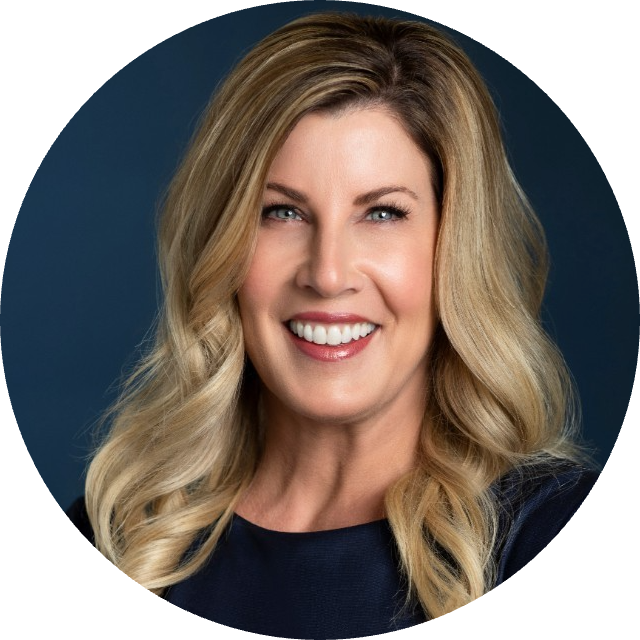‘Huge benefits to our organization’: PepsiCo, IBM share why their ‘returnships’ work

Taking a career break can be scary, but entering the workforce again – even scarier.
For a long time, career breaks have been stigmatized, with recruiters and hiring managers focused on the one part of a resume that has a gap in it. For some, that career break might keep them from getting an interview. Others could just be inundated with questions about it.
And if you’re able to beat that interview process, it doesn’t necessarily get easier with readjusting back into the daily grind. The longer the break, the harder that may be, especially today when the modern workforce is evolving at a new pace thanks to new technologies like generative AI.
However, those breaks are increasingly being viewed differently. For one, people are starting to better understand why some individuals might have had to take a career break, ranging from caregiving needs to mental health needs, and aren’t penalizing folks for it anymore. The stigma is disappearing, LinkedIn, for example, introduced a new feature that highlights career breaks on your profile instead of having to hide your time away. But arguably most importantly, employers are also playing their part by offering extensive “returnship” programs to help the transition back into the workforce. Big employers including Chevron, Intel, Dell, Wells Fargo, Amazon, IBM, and PepsiCo have returnship programs.
Reducing the stigma
Women and minority groups are more likely to take a career break. Caregiving is the leading reason why prime working age people aren’t active in the workforce, and they’re mainly women by a 12:1 ratio.
“We knew that women were really fearful of discussing any gaps in their resume,” said Suzi Owens, senior director of communications at LinkedIn. “Taking time away from work has not always been something that people want to talk about openly. That’s an old playbook.”
Two years ago this March, LinkedIn launched a tool to address those career breaks. In the past year, the amount of people posting career breaks on their profiles has doubled, though LinkedIn didn’t release exact figures. And it’s paid off, with half of hiring managers saying that they believe career breaks can give that candidate valuable skills, according to data LinkedIn shared with WorkLife. In fact, LinkedIn data shows that hiring managers are actively searching for candidates with career breaks.
Owens took a career break herself to travel. She listed it on her profile and describes what she learned during that time that can apply to the workplace: time management, cultural awareness, communication skills. “Candidates often under sell these skills,” said Owens.
The same LinkedIn data found that more than half of all employees say they’ve taken a career break, with almost just as many saying they’d like to take one. And, women are almost twice as likely to take a career break than men with full-time parenting, health and wellness, caregiving, and professional development as the top reasons.
Returnships at Chevron, Wells Fargo, Amazon and more
At Chevron, their “Welcome Back Returnship Program” is designed to support and develop experienced professionals when they make the decision to re-enter the workforce following a career break. It’s a 12-week paid “returnship” that has integrated learning, formal training, and support from supervisors and mentors. Upon completion of the program successful participants may be offered full-time employment and benefits.
Most programs work the same way, allowing participants to have opportunities to sharpen their skills, update their resume, make connections and contribute to a team.
Amazon’s returnship is a 16-week paid and benefits-eligible program. Their program has enrolled people who left to become teachers and then wanted to rejoin Amazon, who took time away to raise children, and those who have had to relocate.
Wells Fargo has several different returnship programs across the globe. It ranges from one in India that is focused specifically on women looking to come back to full-time careers after a break to one in the U.S. that requires someone to have left the workforce for at least two years. They position their returnship as a “highly competitive diversity, equity, and inclusion talent program.” Their program runs for 8 weeks.
PepsiCo and IBM tell us how it works in action
IBM Tech Re-Entry is a full-time, paid returnship program for technical professionals who took a break from the workforce for one or more years and are looking to restart their careers. Unlike the other programs, everyone who goes through the six-month long program will be offered a full-time job afterwards. Their program has been running for eight years, with hundreds of returners going through it.
“For many people, making that step back into the workforce has been challenging, but returnships are that rest point,” said Kelli Jordan, vice president of IBM growth and development. “They allow them an opportunity to come back in, transition into a safer space, and to help close that gap they may have in their resume while they’re doing some reskilling and reacclimating to the workforce.”
Through the program, professionals can refresh their skills with learning plans and work on real-world projects. They have access to the latest tools and technologies available and work alongside multidisciplinary teams to hone their expertise.
“The workforce has shifted, the type of skills that we’re looking for has shifted,” said Jordan. “[Returnships are] something that we’re going to start to see more of from any variety of companies because it is a talent pool that is ready and willing to work that we have maybe just inadvertently been excluding in the past.”
Bryony is one of the graduates who joined IBM’s Client Innovation Center in the U.K. as a software developer.
“After having two kids, I was initially terrified of returning to the workplace, a feeling I imagine many parents share after a career gap of one or more years,” said Bryony in a blog post. “Most of the tools and technologies I used in my previous job nearly six years ago had already been replaced. My anxiety was at an all-time high, and I had so many questions running through my mind.”
At PepsiCo, its returnship program is made possible with a partnership with Path Forward, a company that connects people with returnships and job opportunities with employers who don’t mind a resume gap. It’s a 16-week paid returnship program, first launched in April 2022, open to professionals with at least five years of experience who are returning to the workforce after a career break for caregiving of two or more years. During the returnship, participants have the opportunity to revamp their skills, update their resume with new experience, make connections, contribute to a team, and possibly convert to a full-time position.
Having it specific to those who had to take a career break due to caregiving has helped them be intentional about the program. “A single returnship can go a long way to help an individual struggling to find their way back into the workforce,” said Heather Hoytink, PepsiCo’s president of the south division, who had to navigate working full-time while providing round-the-clock care for extremely premature twins.
Concerns about retention of these returners if far and few between. In 2022 and 2023, more than 80% of PepsiCo’s participants accepted full-time positions at PepsiCo after an average of seven years away from the workforce.
“Being a full-time parent is one of the hardest jobs out there, so our returners often demonstrate outstanding work ethic and grit, yielding huge benefits to our organization,” said Hoytink.
PepsiCo has nearly doubled the number of returnship positions offered since the program’s initial kick off in 2022, although they didn’t share the exact figures with WorkLife. “I think this is something that we’re going to start to see more of from any variety of companies because it is a talent pool that is ready and willing to work that we have maybe just inadvertently been excluding in the past,” said Hoytink.
And the company attributes retaining female leadership, in part, due to the program. In 2023, looking beyond their returnship program, PepsiCo had 97% retention of over 200 female leaders in the south division. PepsiCo is looking to expand its returnship program this year into more geographies and roles.
“Results like that take a much wider effort and returnship plays an important role in our mission to ensure PepsiCo is a supportive and inclusive environment for women and all our employees at large,” said Hoytink.

